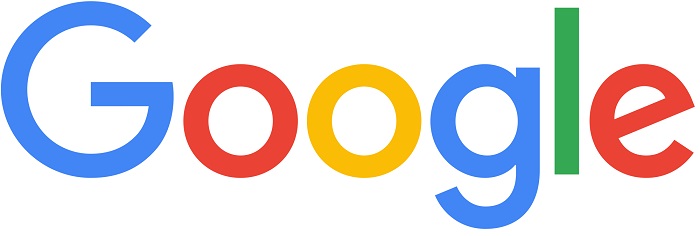There are over 20 years now since we began to log onto our computer, open the browser (probably, a Google product) and access the search engine. It’s fast, easy and convenient. It’s also colorful and sometimes surprising. You might not know the colors of the Google logo by heart, but you immediately recognize it.
The Google logo is one of the most powerful graphics marks in the world. It’s the seventh version and the current one stands out as an iconic symbol of a top player in the online industry. The Google logo is also a lesson to all marketers who want to achieve recognition in one of the most difficult games out there – targeting the mainstream public.
A Brief Look into the Google Logo History
Google took 22 years and a bunch of adjustments to reach this form. Back in 1998, Google was released as a Beta version and featured a logo with a strong 90s vibe. It consisted of letter shades, 3D effects and intense colors. Since the past also reflects the brand’s evolution, you can discover how Google used to look like back in the days by reading this article.
Google featured the well-known color scheme from the beginning. However, the first version had a red G, while the second one turned it into green. Google decided for blue in 1999. Yet, it still had updates to make since the third version of the logo included an exclamation mark, resembling its competitor – Yahoo!
Time and updates flattened the logo’s letters and took Google to its most spectacular update, in 2015. The latest version of the Google logo was part of a rebranding campaign which amazed marketers. Below you will find the most impressive and ingenious initiatives of the online giant.
The Most Courageous Branding Initiatives with the Google Logo
The 2015 Google Rebranding
The Google rebranding campaign was initiated to reveal the latest Google logo to the public. However, this update contained more than just a new look. Let’s see what it was all about.
- The Google logo came with a new font developed in-house. Product Sans is also used for Alphabet, the search engine’s mother company. This connects the brand to the corporate message that Alphabet sends.
- The new logo had a fresh typeface, which could be scaled for any device, whether it’s a smartphone or a tablet.
- This Google logo weighed 305 bytes, instead of 14,000 bytes to show that the public’s needs also need to be covered.
The Trick to the Google Logo
Google always claimed to be innovative and unconventional. How was that to be pictured in a logo?
Graphic designers decided from Saatchi & Saatchi New York decided to make the logo more readable and solve any potential pronunciation problems around the world. Therefore, they made a slanted e, instead of a straight one.
Isn’t this initiative surprising enough? It caught the eye of Lenovo representatives, who chose to adopt the slanted e into their logo.
Back to School
Whenever you send a message, it matters most how you say it rather than what you say. Therefore, the Google press release for the new logo contained a funny and yet suitable message.
The logo has a geometric form made in a schoolbook letter printing style – tones intensified since the previous version. The mathematical approach when communicating the logo changes made it even more appealing to marketers and the public.
The Google Doodles
The Doodles even surprised its authors. The first doodle appeared in 1998, as an out-of-office message for the search engine’s users. Founders wanted to let the public know that the site might go down and they are attending the Burning Man Festival.
The stick figure generated so many positive comments that Google began to use them on holidays and special events. Now the are even personalized Doodles for non-US holidays. Even the latest Google logo was announced using a dedicated Doodle.
However, you may only predict some of the Doodles, such as the Halloween interactive games. You might know that Google doesn’t celebrate Easter. Yet, it manages to surprise. On Valentine’s Day from 2017, Google decided to raise awareness for the pangolins going extinct. Searches on Google for information about the species increased shortly after.![]()
Covering the Customer Journey Map
Google has decided in 2015 to also focus on every step that a user takes when searching on the engine. So, the audience met the Google interactive dots and the G favicon. Whenever something (such as the microphone) is loading, you see the dots. The favicon is available when there’s not enough room for the Google logo.
Wrapping Google Up
Google has now managed to expand to most of your daily activities. You can use the Google Wallet while you shop on the Google Store. You might activate the Google Map to go someplace new. Also, you receive and send emails, store files and spreadsheets and even photos using Google Drive. These products are brand extensions which constantly remind you that you’re using the world’s favorite online product.
It has been known as playful and bold and people expect impressive updates every time they are announced. The company first adjusted to a poor online industry and created the first logo in Microsoft Word and the second one using an online platform called GIMP. Ruth Kedar, the author of the first Google logo even mentioned that it was supposed to look almost non-designed.
Now, the Google logo evolution involves interactive and creative elements. The company still amazes marketers and probably will continue to do so. Its Doodles are already news topics, as well as the release of new brand extensions.
The Google logo evolution is impressive and charming. Learn the marketing lessons it contains and use them for your own brand!


